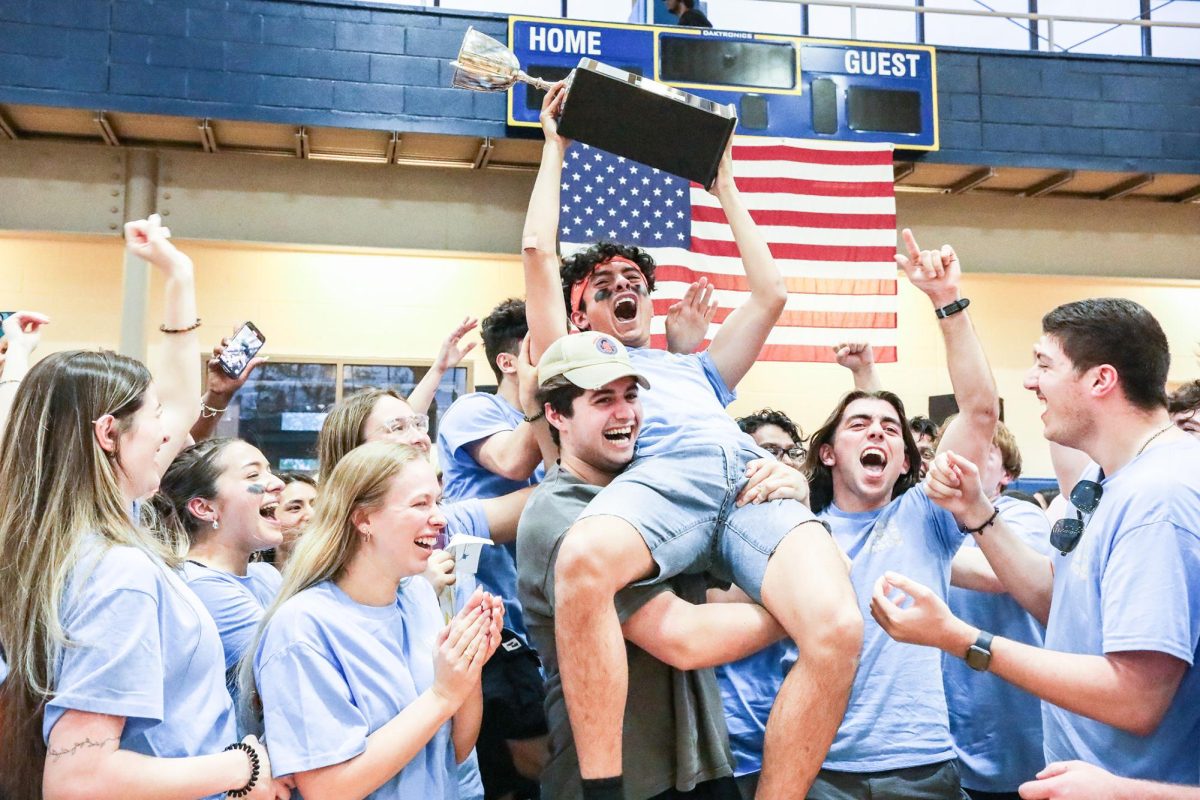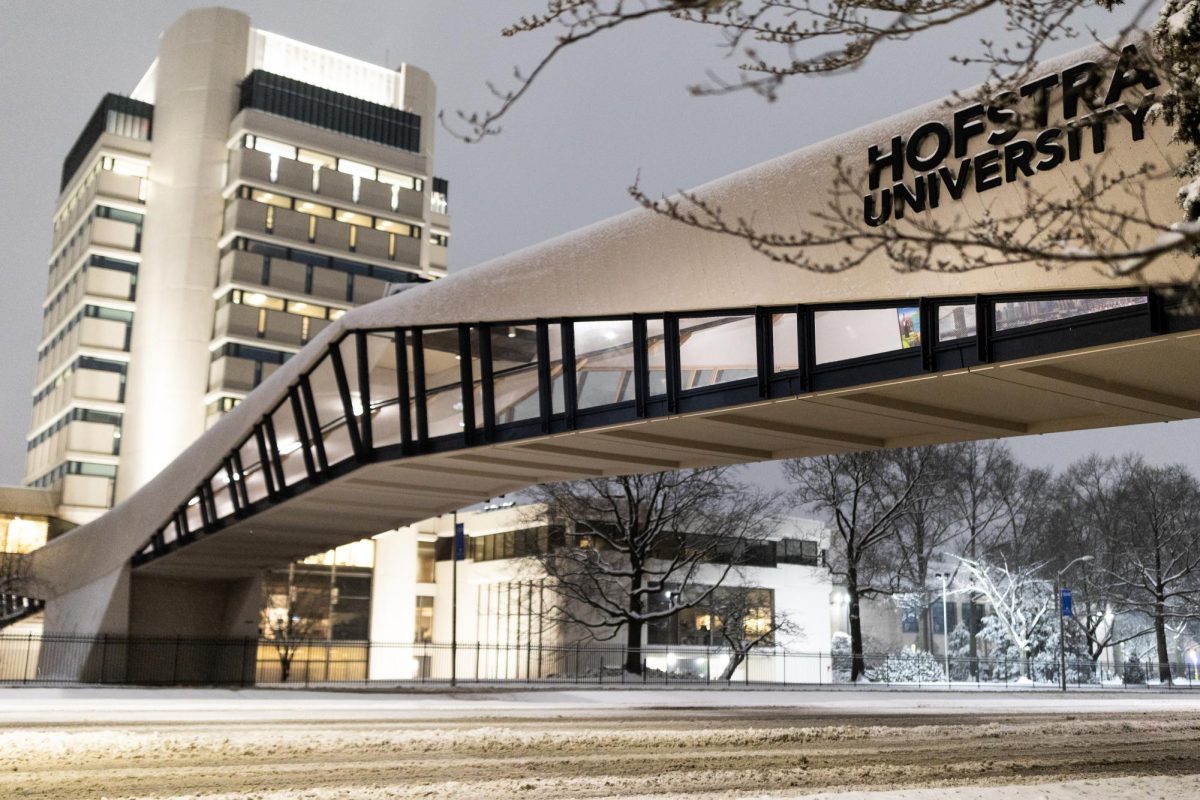By Daniel Nguyen
Staff Writer
A Brutalism Symposium honoring the semi-centennial designation of Hofstra’s Joan and Donald E. Axinn Library highlighted the architectural style known as Brutalism and its relation to the design of the library and the North Campus towers. Sponsored by the Hofstra University Library and the Hofstra Cultural Center, the symposium invited English graphic designer and Chelsea College of Arts Professor Peter Chadwick to speak on his book, “This Brutal World.” The event, held on Wednesday, Nov. 1, featured a presentation on Yankee Architecture by Boston University Professor Brian Sirman and concluded with a panel of architecture industry veterans including Alexandra Lange, Peter Bentel and Mark Pasnik.

Sarah McCleskey, the head of Resource & Collection Services at the Hofstra University Library, got the idea for the symposium in November 2016. Through research with Axinn’s Director of Library and Information Services Howard Graves, McCleskey found Chadwick’s popular Twitter @BrutalHouse and invited him to speak.
McCleskey said, “I was thinking, ‘How can we show Hofstra students that the library building isn’t just a concrete monstrosity, but that it’s actually a really interesting style of architecture, with some ties to music, literature and social movements?’”
Brutalism, an architectural style originating from England, predominantly used concrete as a construction material due to its affordability and pliability. Designed by Warner, Burns, Toan and Lunde Architects and Planners in New York (WBTL), Axinn Library – along with the towers and unispan – were awarded the New York Concrete Industry Board’s annual recognition for outstanding use of concrete in design and construction in 1966.
“When Howard Graves mentioned to me last fall that he wanted some sort of program to celebrate the 50th anniversary of the dedication of the library building, I told him I would try to come up with some ideas,” McCleskey said. “Over the years I have been involved in renovations of the ground, main, second and third floors, so I have thought a lot about stripping away the old, dark layers of wood and other materials that covered up the original concrete construction. Because of this, I started thinking about the Brutalist style of the library, and I began to investigate Brutalism more than I had done in the past.”
While researching the topic, McClesky discovered a number of new references celebrating the style, including a special issue of October Magazine devoted to Brutalism. That is when McClesky says it all started to come together. “I asked the library to purchase Peter’s book, ‘This Brutal World’ and as soon as I got it into my hands, I knew that we had found our symposium topic. Peter’s combination of his personal experience growing up in the industrial north of England, the gorgeous black and white photographs, and the quotes from musicians, architects, artists, writers … the book is a dazzling manifesto for the beauty of the Brutal style.”
Chadwick combined his music industry background as a graphic designer of album art and posters with his presentation on Brutalist architecture during the event, playing songs by artists like Aphex Twin alongside images of Brutalist buildings. The speech touched on his experience as a youth in England, where factories, skateboarding and stark landscapes inspired his appreciation for the concrete designs.
On his observation of Axinn’s own design, Chadwick said, “I’m looking at the details,” like the weathering on the side of the buildings which he referred to as, “almost fingerprints.”
Other speakers, like Lange and Sirman, spoke about Brutalist structures on other campuses, like City College of New York. They also explained how Brutalism is displayed in the architecture of other famous structures around the nation, like Boston City Hall, which is ranked one of the ugliest buildings in the world.
Students in attendance were mixed in their response to the speakers.
Gabriel De Oliveira, a senior finance major, said, “I didn’t really like the symposium, and was hoping for more of a discussion about architecture. Instead it was more focused on Peter Chadwick’s life and his work, and while I find his career to be interesting, I didn’t get what I had hoped for. There was no discussion of Brutalism as an architectural style just besides him saying he likes how it looks. The most interesting thing I felt was that people who grew up around concrete, skaters, tend to enjoy the concrete-usage in Brutalism.”
Sam Shuart, a senior linguistics and religion double major, said, “I thought the symposium was cool because it was interesting to learn more about the architecture of Hofstra, especially since the library and towers are so different in style from the rest of campus.”













